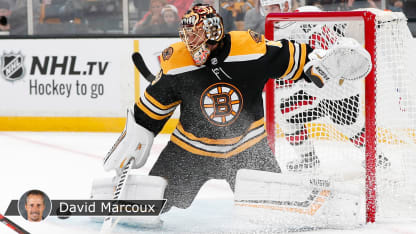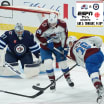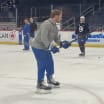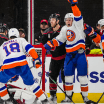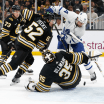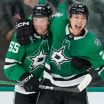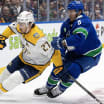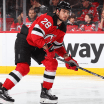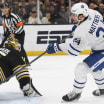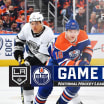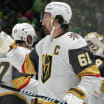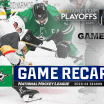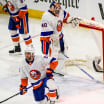As Faksa took his shot from near the left-wing boards, Boston defenseman Torey Krug made a normal reaction by trying to get his stick on the puck to deflect it out of play. Instead, Krug slightly redirected the puck and didn't allow Rask to properly track the shot. We'll never know what might have happened had Krug not intervened, but I'm betting if Krug's stick is not in the shooting lane, Rask is going to stop the shot, catch it, or at worst control the rebound.
By no means are we picking on Krug here. He's only doing what he's been taught to do for many years, what's ingrained in a defenseman's DNA -- to get a stick on the puck to deflect it away from the goal.
Now let's look at this play from the goalie's perspective.
If we only consider the angle and distance of Faksa's shot, it doesn't look like a difficult save. But what most people don't realize is the effect the stick on puck can have. It often creates a fluttering, knuckleball type of shot that has an abnormal trajectory, as opposed to an easy, clear view and a trackable trajectory.
Without a clean read on this stick-on-puck shot, Rask has to deal with a puck that could do many things, including bounce out of his glove or even go right through him, which is what happened on this shot.
Rask's career success, like that of most Finnish goalies (Pekka Rinne and
Miikka Kiprusoff
, for example), is based on active hands and catching pucks to create a stoppage in play.
Along with most goalies, I do see the value of defensemen deflecting away pucks in high-danger areas. But I believe that shots from low-danger areas are better left untouched for the goalie to get a good look at them. I know some coaches may not agree with this theory, but most NHL goalies I've spoken to during the past 10 years definitely prefer that their defensemen get their sticks out of the way when we're talking about shots from far distances or sharper angles.
A game between the Nashville Predators and Colorado Avalanche on Wednesday produced good examples. A high-danger shot by Nashville's Colton Sissons needed to be contested and redirected, even though it resulted in a fluttering puck that ramped up Colorado defenseman Samuel Girard's stick. The shot went over the shoulder of Avalanche goalie Semyon Varlamov, who was unable to properly track the shot; however, the replay clearly shows the defenseman's good intentions.
